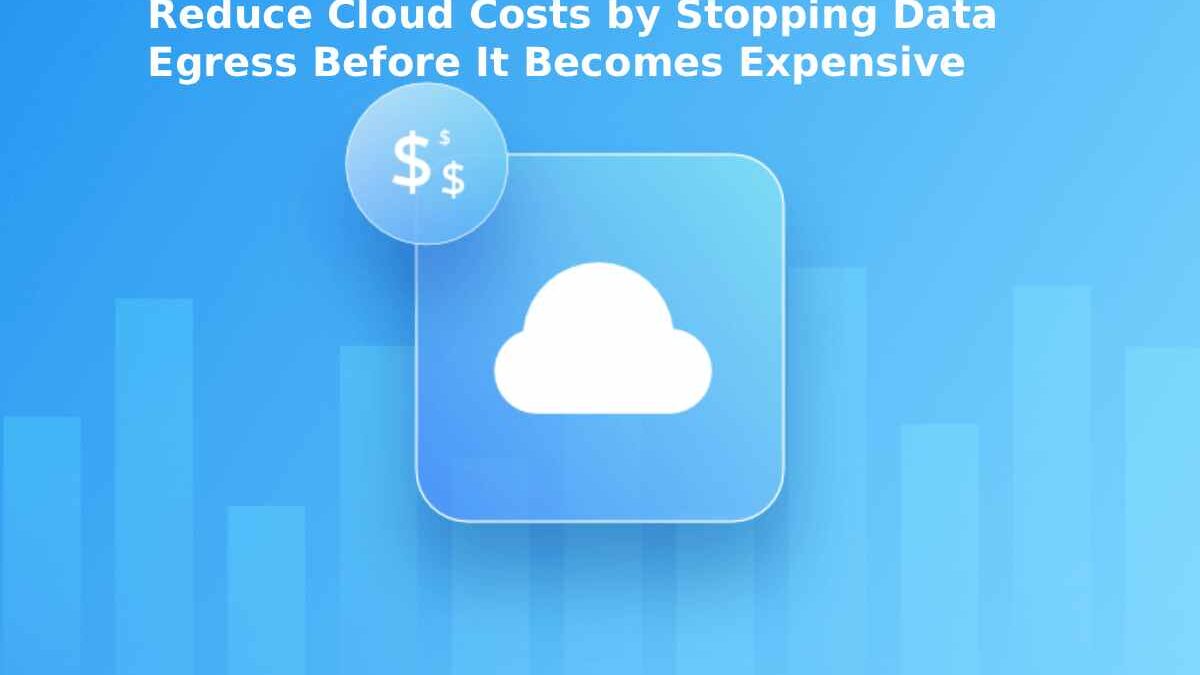In your data-heavy cloud-based business environment, managing data egress has become a critical factor in controlling operational costs. To effectively curb rising cloud bills, your business must implement proactive strategies that monitor, filter, and manage outbound data flows before they spiral into expensive charges.
Below, we discuss practical approaches you can use today to curb egress and optimize your costs, ultimately creating a more cost-efficient and secure cloud environment.
Table of Contents
Understanding Data Egress and Shadow SaaS
Data egress refers to the outbound transfer of data from a cloud provider’s network to another location. In a business, data egress may involve transferring data to your on-premises data center, another cloud region, or the public internet.
Egress typically incurs data egress costs or charges, paid to cloud providers based on the volume of data you transfer out of your infrastructure. Unlike data ingress (uploading data to the cloud), which is often free, egress fees can become a significant and sometimes unexpected part of cloud expenses.
Shadow SaaS are SaaS applications that employees or teams use without formal approval or oversight by the IT department. These “shadow IT” SaaS apps often operate outside official governance, making them a potential source of uncontrolled data transfers. They contribute to unnecessary outbound traffic, as users may upload or synchronize data with these unsanctioned cloud services.
As non-IT members make more cloud app purchases to increase productivity and accessibility of cloud services, they may inadvertently expose critical business data, violate data protection regulations, and increase egress costs in your business.
Strategies to Curb Data Egress
Managing data egress costs involves controlling outbound traffic, particularly from shadow SaaS, to avoid unnecessary data transfers. Since data egress can become expensive pretty fast, it’s crucial to manage and proactively filter unnecessary outbound traffic, especially from shadow SaaS applications that may bypass official controls.
Leverage Content Delivery Networks (CDNs)
Content Delivery Networks (CDNs) are effective at reducing cloud data egress costs because they cache and serve content from locations closer to end users. Doing this minimizes the amount of data that must be transferred from the origin cloud storage.
To reduce your data costs, you can use a CDN to store copies of frequently accessed content on geographically distributed edge servers near users. Caching content at edge locations significantly reduces repetitive data transfers from the origin cloud provider’s servers, cutting egress traffic and costs.
Additionally, CDNs reduce the physical distance data must travel. They use geographical proximity to optimize content delivery speed and reduce inter-region data transfer fees, which are typically higher than within-region transfers.
Modern CDNs also use data compression, adaptive streaming, and intelligent caching strategies to minimize the size and frequency of data transfers without compromising performance or content freshness. Since compressed data reduces bandwidth requirements, it can further lower your data egress costs.
Apply Cloud-Based Filtering to Shadow SaaS Uploads
Cloud-based filtering tools can help you detect, monitor, and control unauthorized SaaS application usage that can cause unexpected or excessive data egress and security risks.
You can use filtering tools and systems at the network or cloud level to identify and manage shadow SaaS traffic proactively. They block and restrict unnecessary outbound data flows before they incur significant egress charges or compliance violations.
Choose a cloud-based filtering application that monitors network traffic, user authentication, SaaS access patterns, and usage analytics to uncover unapproved SaaS applications without disrupting employee productivity. Once it identifies a shadow SaaS, it enforces network policies on edge devices, cloud gateways, or within the SaaS environment itself to restrict unauthorized data uploads or downloads.
Some modern cloud-based filtering solutions also use AI and automation to handle identification, risk scoring, and policy enforcement with minimal manual intervention. These tools use machine learning to revoke access to unauthorized apps, notify users, or quarantine suspicious uploads automatically.
Use Private Connectivity and Direct Cloud Linking
You can use private connectivity to establish a dedicated, high-speed, and secure network connection directly between your on-premises infrastructure or data centers, bypassing the public internet.
Direct cloud linking often has lower or waived egress charges, significantly reducing outbound data transfer expenses. You can also offset the fixed cost of a private connection with savings from reduced internet egress fees, even as you enjoy the economies of transferring substantial cloud data.
Private connections usually offer faster, more consistent speeds with reduced latency and jitter compared to the public internet. That means faster and more secure transfers because dedicated links minimize packet loss and connection instability.
Monitor, Audit, and Automate
Monitoring, auditing, and automating data egress in cloud environments are essential for controlling outbound data transfer costs, detecting anomalies, and enforcing policies efficiently. You get continuous visibility and proactive cost management, and you can opt for stronger security controls.
Use monitoring tools that provide real-time visibility into data egress volumes and destinations to identify patterns, spikes, or unauthorized transfers that may cause unexpected costs. You can also use them to aggregate logs, metrics, and traces from cloud infrastructure and applications, using unified views that pinpoint the sources of heavy outbound data.
Auditing tools can also help you examine past egress events to identify trends, persistently high-cost data flows, and compliance issues. Once identified, you can check for sensitive data leaks or unusual outbound traffic patterns. Audits can help you identify potential data exfiltration attempts, often supported by egress filtering and user behavior analytics.
With automation, you can enforce data transfer policies by blocking or throttling outbound transfers that violate rules, without requiring manual intervention.

